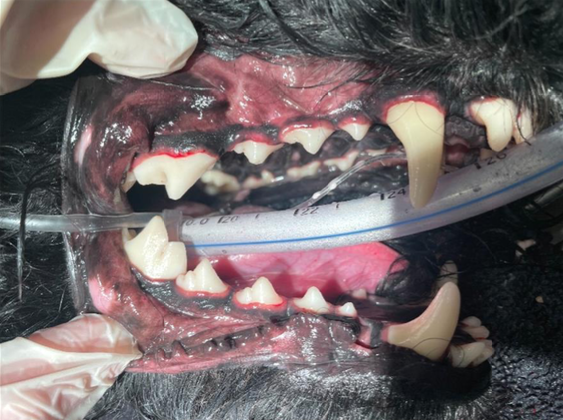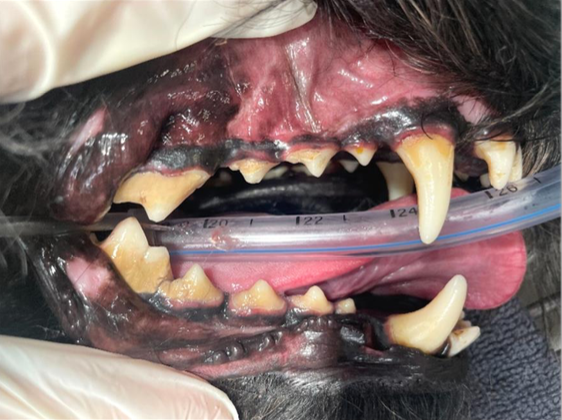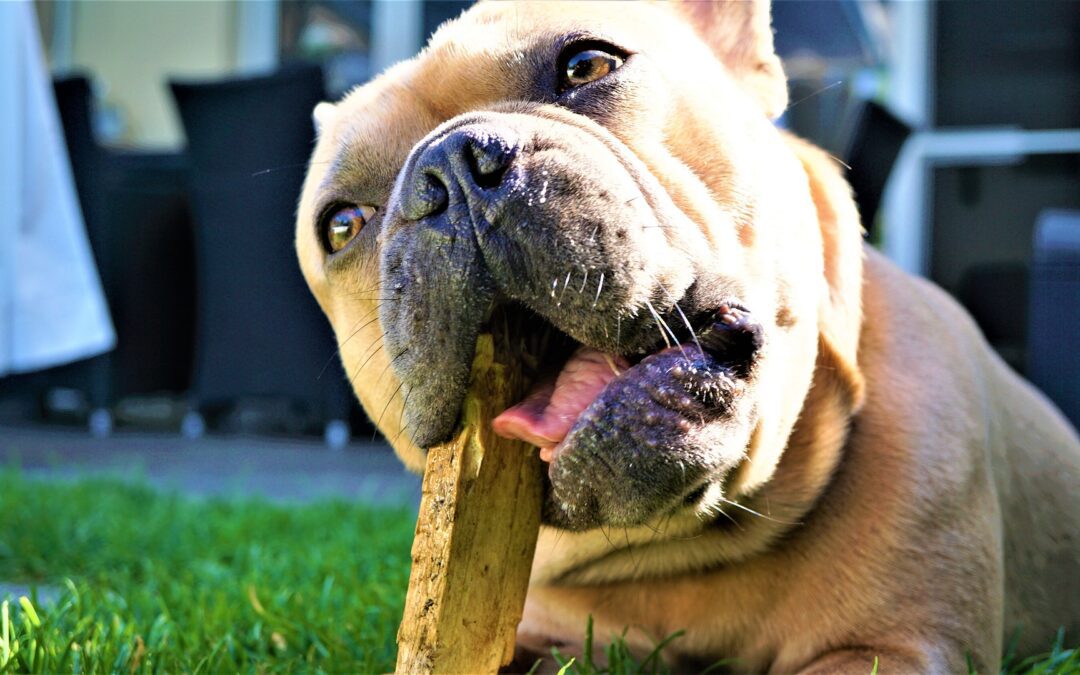As a profession we spend the 28 days of February heavily focused on our pet’s dental health, which is great, but unfortunately not enough. It has been shown that periodontal disease is the number one health problem affecting small animal patients.1,2 It is even so significant that by 2 years of age, 80% of dogs and 70% of cats have some form of periodontal disease.3
As pet owners, we likely don’t focus lots of time and thought on our pet’s mouths, but we should! In humans, there are systemic consequences of poor dental health including impacts on our kidneys, liver, heart, and lungs. It is reported that human patients with periodontal disease are four times more likely to have multiple (3 or more) systemic maladies than those in good periodontal health.5
It may seem like a big ask to brush your dog and cat’s teeth daily, which can be true, but the benefits can be exponential. Even after a dental cleaning under anesthesia, plaque can form on the teeth within 24 hours.3,4 That plaque can cause localized inflammation at the gingival margin and lead to bleeding, redness, and discomfort. This term called GINGIVITIS is the early stages of gum disease and can be reversed with appropriate cleaning and therapy. Once the inflammation has progressed to the point where there are changes including bone loss, pocketing, and gum recession, among others, we have a diagnosis called PERIODONTAL DISEASE, which is not reversible.
So, you ask, what can we do as pet owners? I believe our big takeaways from dental health discussions are to figure out a plan that works for your family and your pet. Not every pup or everyone’s schedule is going to allow you to brush daily. Not every pet is going to chew on veterinary approved dental chews as recommended by the Veterinary Oral Health Council (VOHC). But there are multiple opportunities available to us daily that can improve the oral health of our patients.
It is also important to remember that even if we are performing bi-annual examinations on your pet, we can never fully examine every aspect of the oral cavity. This means appropriately timed Comprehensive Oral Health Assessment and Treatments (COHAT) under anesthesia are necessary to examine each tooth, measure periodontal pocketing, look for growths, perform radiographs, etc.
At Peachtree Hills Animal Hospital, we are committed to the highest quality care for your pet and want to do it in an inclusive environment that takes you the pet owner, and the pet into account. We want to ease worries, help create solutions, and give you the best curtailed advice that provides the best for your family. Keep in mind, if we are able to create a plan that reduces plaque, tartar, gingivitis, and periodontal disease, smaller dogs and cats live 15–20% longer if they receive dental care as needed throughout their life and larger dogs live 10–15% longer. Isn’t that amazing!?!
Please reach out if you have any questions.
Take Care,
Mark Belyeu, DVM
References:
1. University of Minnesota Center for Companion Animal Health. National Companion Animal Study, 1996, p 3.
2. Lund EM, Armstrong PJ, Kirk CA, et al. Health status and population characteristics of dogs and cats examined at private veterinary practices in the United States. JAVMA 1999; 214:1336-1341.
3. Wiggs RB, Lobprise HB. Periodontology. Veterinary Dentistry, Principals and Practice. Philadelphia: Lippincott – Raven, 1997, pp 186-231.
4. Quirynen M, Teughels W, Kinder Haake S, Newman MG. Microbiology of periodontal diseases. Carranza’s Clinical Periodontology. St. Louis: WB Saunders, 2006, pp 134-169.
5. Al-emadi a, Bissada n, Farah C, et al. systemic diseases among patients with and without alveolar bone loss. Quintessence Int 2006; 37(10):761-765.

Dental COHAT on canine patient under anesthesia PRIOR to cleaning and evaluation.

Dental COHAT on canine patient under anesthesia AFTER cleaning and evaluation.
References:
1. University of Minnesota Center for Companion Animal Health. National Companion Animal Study, 1996, p 3.
2. Lund EM, Armstrong PJ, Kirk CA, et al. Health status and population characteristics of dogs and cats examined at private veterinary practices in the United States. JAVMA 1999; 214:1336-1341.
3. Wiggs RB, Lobprise HB. Periodontology. Veterinary Dentistry, Principals and Practice. Philadelphia: Lippincott – Raven, 1997, pp 186-231.
4. Quirynen M, Teughels W, Kinder Haake S, Newman MG. Microbiology of periodontal diseases. Carranza’s Clinical Periodontology. St. Louis: WB Saunders, 2006, pp 134-169.
5. Al-emadi a, Bissada n, Farah C, et al. systemic diseases among patients with and without alveolar bone loss. Quintessence Int 2006; 37(10):761-765.

